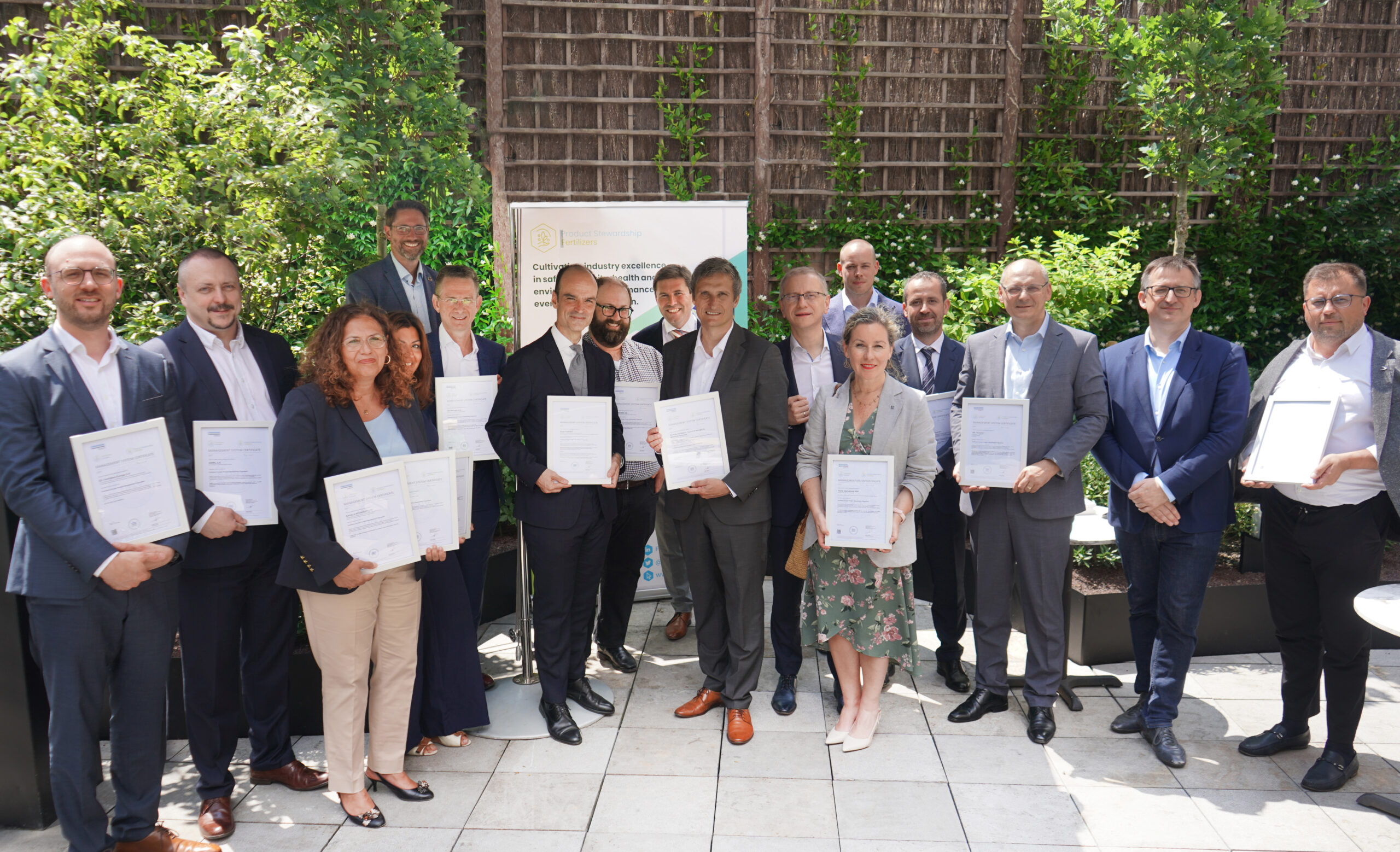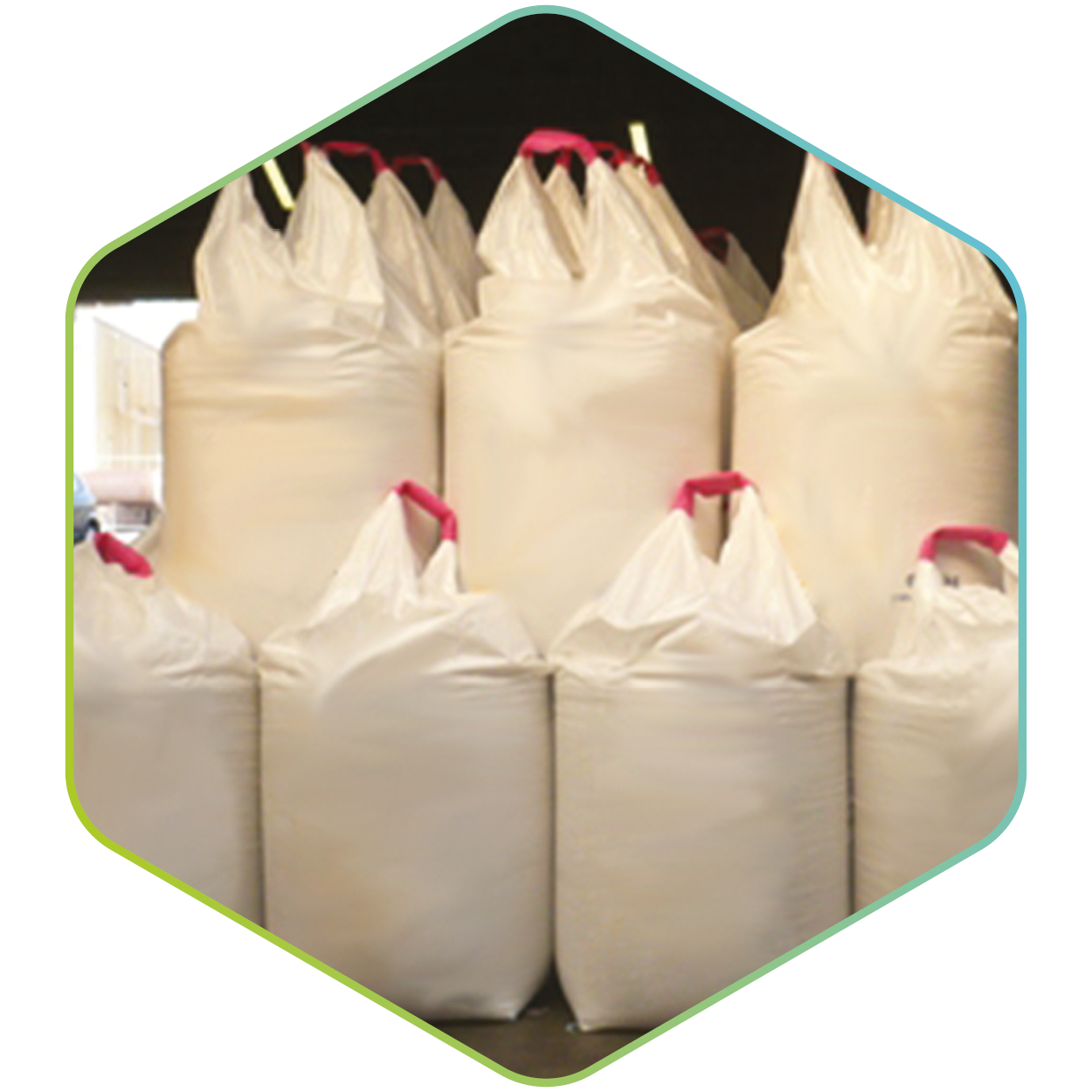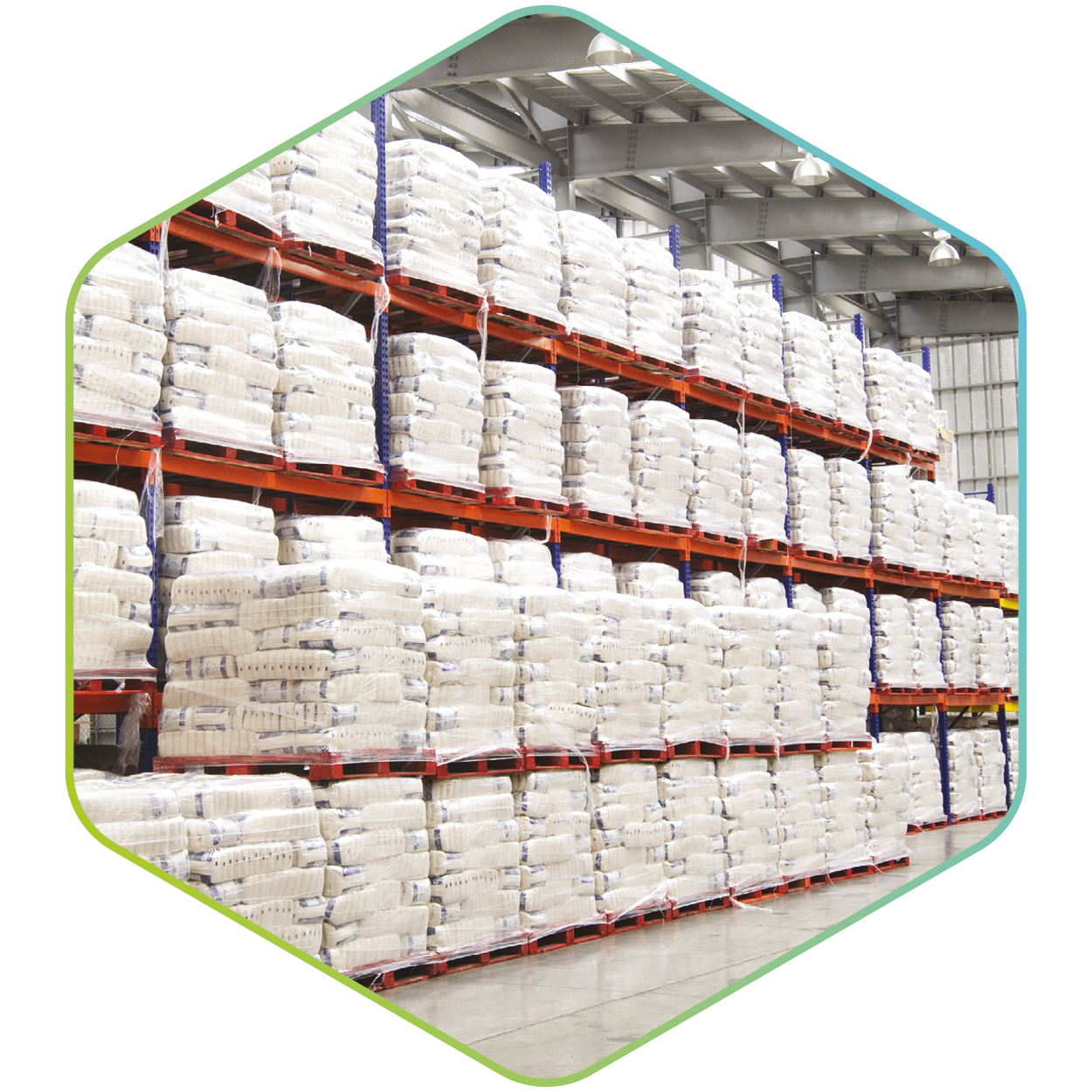Committed to safe, efficient and environmentally friendly fertilizer production
Fertilizers Europe Product Stewardship Program
Fertilizers Europe has developed the Product Stewardship Program which sets the highest global standards in fertilizer production and upholds and strengthens the industry’s advanced production techniques and safety procedures throughout Europe.
To ensure adherence to these standards, Fertilizers Europe mandates that all member companies adopt and implement the Product Stewardship Program along with the accompanying best practice guidelines. Regular third-party audits are conducted every three years to verify the implementation of these practices.
This year, the audit was successfully completed, and all members of Fertilizers Europe have met the requirements. In recognition of this accomplishment, a certification ceremony was held on 21 June.


What does the Product Stewardship Program cover?
The program covers every stage of the production process, including product development, raw material sourcing, fertilizer manufacturing, distribution, and storage as well as marketing and sales.
To assist their implementation of Product Stewardship, Fertilizers Europe provides its member companies with:
- Reference to EU regulations
- Reference to Fertilizers Europe’s requirements
- Guidance to industry best practices, addressing all stages of the product lifecyce.


Product development:
Before they can be commercialized in Europe, all fertilizers, whether new or improvements to existing products, must comply with various legal requirements. During the product development stage, an assessment is made of the potential impact of the manufacturing, distribution, intermediate storage and handling of the product from the factory to the farm, as well as of its storage and use by farmers. The acceptability of the product is established before moving to its manufacture, marketing and sale.
Sourcing raw materials
The European fertilizer industry relies on materials sourced from outside Europe, such as natural gas, phosphate, and potash ores. The sourcing of raw materials, intermediate products, additives, coatings, and other goods and services must prioritize safety, security, and environmental impact. This involves assessing each item’s compliance with Fertilizers Europe’s safety management principles, the EU’s best available production techniques (BAT-BREFs) for environmental impact, and the European Union’s REACH and SHE legislation. The entire supply chain, including transportation and intermediate storage, must meet the necessary product security requirements.


Fertilizer production:
This covers many aspects of the production process such as:
- Additives:. Every material used must satisfy the requirements of the European Union’s REACH (Registration, Evaluation, Authorisation and Restriction of Chemicals) guidelines and other safety, health and environmental (SHE) legislation.
- Environmental controls: Environmental permits are based on the concept of Best Available Techniques (BAT). Fertilizers Europe has also issued eight reference documents on Best Available Techniques in the fertilizer industry, covering all essential processing operations.
- Best practice guidelines: Fertilizer manufacturers are expected to follow the industry’s best practice guidelines. These cover safety management standards and risk assessment, product specification, emergency plans, and safety training.
- Safety management: Fertilizers Europe has established strong principles for guidelines on the management of safety during fertilizer production and storage at manufacturers’ production sites which apply for site employees as well as to those for contractor personnel.
- Recycling and waste: One of the objectives of product stewardship is to minimize safety and environmental issues in relation to production waste and non-conforming materials. This involves the re-use, recycling and proper disposal of solid and liquid wastes, as well as packaging materials, and the correct treatment of any product that is off-specification or refused by customers. Specific protocols are established to ensure the safe management and disposal of each type of waste.
Packaging
Packaging materials need to be compatible with the particular fertilizer to avoid any chemical or physical reaction. The design and construction of fertilizer bags must be such as to protect the product from any adverse conditions like water ingress and direct sun exposure and provide resistance when the product is lifted, stacked or dropped.


Handling and transport
Safe loading of fertilizers, – whether bagged or in bulk – onto trucks, rail wagons, ships and barges is required to satisfy Fertilizers Europe’s Best Practice Guidelines. The same applies to the handling of input materials, intermediate products and chemicals involved in the production process. The Fertilizers Europe Product Stewardship Program calls for the selection of transport operators based on SHE performance and competence, adherence to best industry practice in their loading and unloading operations, and attention to security during transport.
Storage and security
Fertilizers need be stored and handled with care. The aim is to maintain the physical and chemical qualities of the product, to prevent incidents, such as fire, product decomposition or explosion, and to avoid product theft.
Fertilizers Europe’s Best Practice Guidelines provide manufacturing companies with the procedures to follow. The guidelines can also be used when renting storage and for selecting distributors and their warehouses. External warehouse selection needs to be based on an assessment of the operator’s SHE performance and the SHE management and security systems in place.


Marketing and sales
The industry’s manufacturers have implemented robust quality assurance systems to document essential product characteristics and conduct regular laboratory analyses, safeguarding product quality throughout distribution. Swift response procedures are in place to address complaints from customers, distributors, and service providers. Batch traceability and product recall systems enable effective identification and removal of products when necessary. The industry’s marketing and sales departments play a crucial role in providing guidance on product usage, safety, and regulatory compliance.